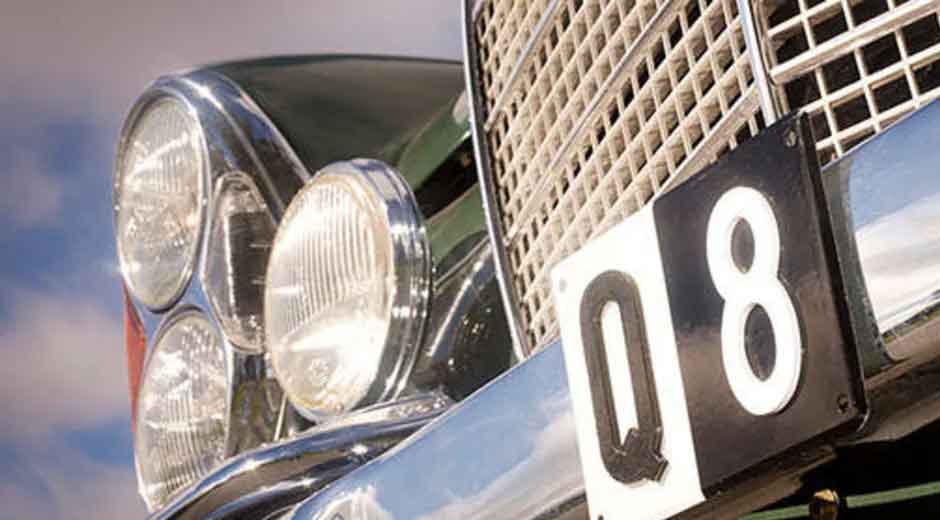How to Choose a Personalised Number Plate That Matches Your Car’s Style

Your car says a lot about you. So why let a generic number plate undo all that effort?
A personalised plate is more than a string of letters and numbers. It’s part of your car’s personality. Done right, it can complement the car’s design, reflect your style, and even turn a few heads.
So, here’s how to make sure your custom plate matches the style of your car perfectly.
Think About Your Car’s Overall Vibe
Start by stepping back and looking at your car from the outside. Not just the shape or the colour, but the feeling it gives off. Is it sleek and modern? Vintage and classic? Loud and flashy? Each of these traits will steer your plate choice in a different direction.
For example:
A luxury saloon often suits subtle, classy plates. You might lean towards initials or elegant combinations that don’t scream for attention.
A sporty coupe might work better with something punchier. Short words, power-themed combinations, or even fun abbreviations can work here.
A quirky retro model? You’ve got room to be a bit playful. Even dated or nostalgic references can fit surprisingly well.
The trick is to make the plate feel like an extension of the car, not something that was stuck on as an afterthought.
Match the Plate Format to the Car’s Age
This part matters more than people think.
If you’re putting a plate on a newer car, avoid anything that makes it look older. Number formats that hint at an earlier year can cheapen the feel of a fresh, modern vehicle. On the flip side, a vintage car with a plate that looks too new can feel off, almost like it’s wearing the wrong outfit.
Sticking with a format that suits the car’s registration age (or earlier) tends to look better. The aim is to blend, not clash.
Wordplay: Smart, Not Cringe
There’s a fine line between clever and corny. The best personalised number plates walk that line carefully. They’re memorable without being try-hard. Let’s take a look at how to get it right:
- Avoid forced spellings that only make sense if someone squints and reads it out loud three times.
- Steer clear of anything too personal unless you’re genuinely OK with putting it on display every day.
- Think about how strangers will see it. You might love the joke, but does it come across in the right way?
Plates that use initials, short nicknames, or abbreviations are often the safest bet. They’re timeless and tend to hold value better too.
Colour and Car Design Matter More Than You Think
Yes, it’s just a plate, but colour and design still play a role. A deep black car with tinted windows has a very different tone from a pastel-coloured convertible. The bolder the car, the more freedom you have with a plate that pops. If the car’s finish is glossy and sporty, a strong, sharp-edged plate can work well. If it’s matte or more understated, a clean, minimal plate might look more appropriate.
And if your car already has a lot going on visually, from trim to body shape, maybe don’t go over the top with the plate. Less can be more.
Know What’s Available But Stick to Your Vision
There’s a huge range of plate options out there. Some are rare and expensive. Others are more affordable but still meaningful. While it’s easy to get pulled in by what’s trending or what someone else recommends, focus on what fits your car and your style best.
If you’ve got a theme in mind, like speed, status, or humour, stick to it. Don’t compromise because something else is a better deal. This isn’t just about what’s available. It’s about what feels right.
Check the Legal Bits, Always
This one isn’t glamorous, but it matters. A plate must be legal to drive on public roads. That means it must follow rules around spacing, characters, and materials. Decorative fonts, misplaced letters, or incorrect colours might look good in theory, but they won’t pass inspection.
Before buying, double-check that the plate can be used on your car without breaking any rules. Not doing this can lead to fines or having to remove it altogether.
When to Go Bold, and When to Keep It Classic
Some cars are made for attention. If you’ve got a loud engine, wide body kit, or bright custom paint, a bold plate can work well. Think single words, four-character combinations, or even plates that play with numbers as letters.
However, for more refined vehicles, restraint goes further. A short plate with a subtle nod to your name or background adds elegance without trying too hard. You don’t need to be loud to make a statement.
6 Signs You’ve Found the Right Plate
If you’re unsure whether a plate actually works for your car, run it through this quick check:
- It fits the car’s style– It doesn’t feel out of place with the design or finish.
- It’s easy to read– No weird spellings or confusing combinations.
- It’s future-proof– You won’t cringe at it in five years.
- It reflects your personality– Without being overly personal or awkward.
- It holds some value– Not essential, but helpful if you ever sell it.
- You smile when you look at it– That simple reaction is a good sign.
Don’t Rush the Decision
This isn’t just an accessory. It’s a permanent part of your car’s identity. Take your time. Sleep on it. Try a few variations out loud. Even mock it up on your number plate holder if you can.
People often spend weeks choosing a car, but only a few minutes picking a plate. Doing the opposite makes more sense. The plate stays, even when the car changes.
The Final Word on Style
A personalised number plate isn’t about showing off. It’s about creating a small detail that brings the whole look together. The best ones aren’t the flashiest or the most expensive. They’re the ones that just feel right.
They suit the car. They reflect the driver. And they make you look twice for all the right reasons.


